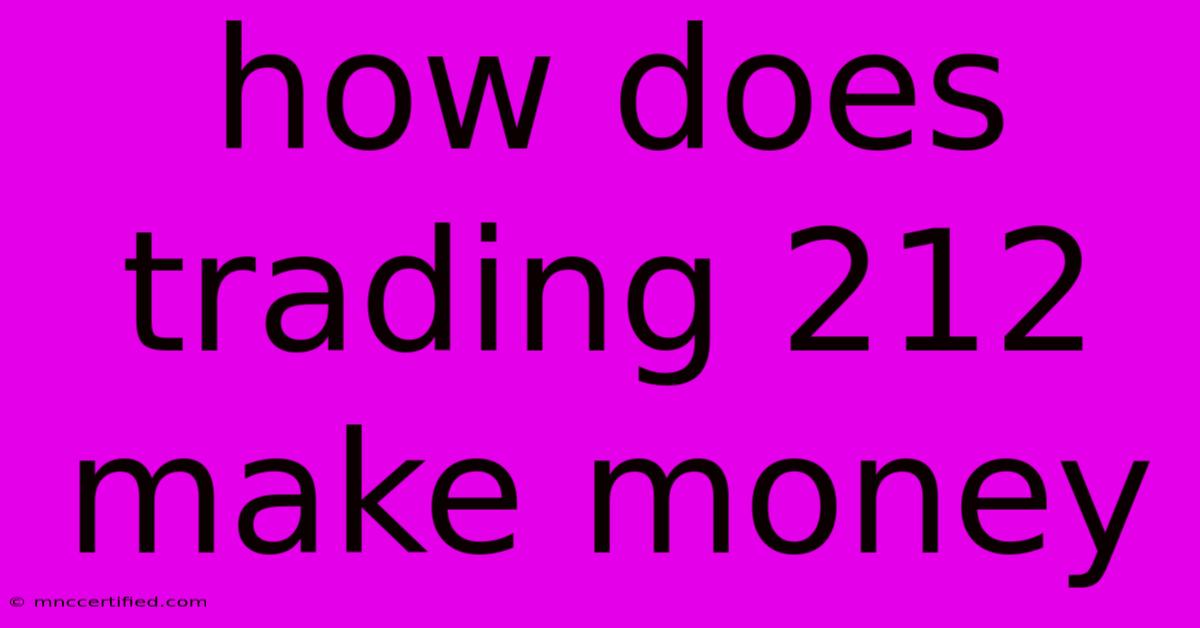How Does Trading 212 Make Money

Table of Contents
How Does Trading 212 Make Money? A Deep Dive into Revenue Streams
Trading 212 has become a popular platform for both beginner and experienced investors, offering commission-free trading and a user-friendly interface. But how does a platform offering seemingly free trading actually generate revenue? The answer is multifaceted, and understanding these revenue streams is crucial for anyone using the platform. This article will delve into the various ways Trading 212 monetizes its services.
Key Revenue Streams of Trading 212
Trading 212's business model isn't built on charging commissions on trades. Instead, they employ several strategies to generate profit:
1. Spread Widening:
This is perhaps the most significant source of Trading 212's revenue. When you buy or sell an asset on Trading 212, the price you see isn't the actual market price. The platform incorporates a spread, a small difference between the bid and ask price. This spread is the profit Trading 212 makes on each transaction. While advertised as "commission-free," this spread is the hidden cost built into the system. The wider the spread, the higher their profit margin. This is particularly notable in less liquid assets where spreads are naturally wider.
2. Interest on Cash Balances:
Trading 212 earns interest on the cash held in users' accounts. This is standard practice for many brokerage firms. They deposit these funds into interest-bearing accounts, generating revenue passively. While individual user returns may be minimal, the aggregated interest from all users represents a significant sum for Trading 212.
3. Financing and Lending:
Trading 212 may lend out some of the cash held in user accounts to other market participants, generating interest income. This is a common practice within the financial industry, and Trading 212 likely takes advantage of opportunities to increase their revenue through such lending activities. It is important to note that Trading 212 is regulated and is obliged to hold client funds securely and separately from their own operational funds.
4. Investment Products and Fees:
While core trading is commission-free, Trading 212 offers other investment products that may incur fees. This includes things like:
- Investment ISA (Individual Savings Account) charges: While the trading itself might be free, there could be small administrative fees associated with maintaining an ISA.
- Premium features: Some advanced features or functionalities might come with subscription fees.
It's crucial to read the specific terms and conditions for each product to understand any associated fees.
5. Data Licensing and Partnerships:
Trading 212 might generate revenue through data licensing agreements or partnerships with other financial institutions. This revenue stream is less transparent but could contribute to their overall profitability.
Understanding the Implications for Traders
While Trading 212 offers a seemingly "free" trading platform, it's crucial to recognize that they still need to generate profits. The spread is a hidden cost that directly impacts the returns on your investments. Understanding this mechanism is critical for making informed trading decisions. It's also essential to be aware of any potential fees related to other products or premium features offered by the platform.
In conclusion: Trading 212's revenue model relies heavily on spread widening and interest income generated from user funds. While the absence of explicit commissions is attractive, traders must understand the underlying mechanisms that generate the platform's profit to accurately assess the overall costs and potential returns of their investments. Remember to always carefully review the terms and conditions and consider these factors when choosing a brokerage. Comparing spreads across different platforms can help you optimize your trading strategies and minimize hidden costs.

Thank you for visiting our website wich cover about How Does Trading 212 Make Money. We hope the information provided has been useful to you. Feel free to contact us if you have any questions or need further assistance. See you next time and dont miss to bookmark.
Featured Posts
-
Will Bondo Stick To Fiberglass
Nov 26, 2024
-
My Word Is My Bond Movie Quote
Nov 26, 2024
-
Trump Case Dismissed Judges Ruling On Jan 6
Nov 26, 2024
-
Week 12 Chargers Ravens Inactive Players
Nov 26, 2024
-
Concord Group Insurance Careers
Nov 26, 2024